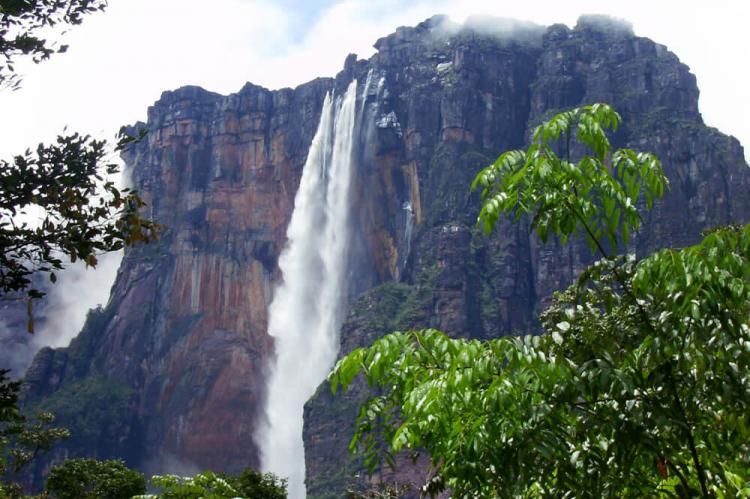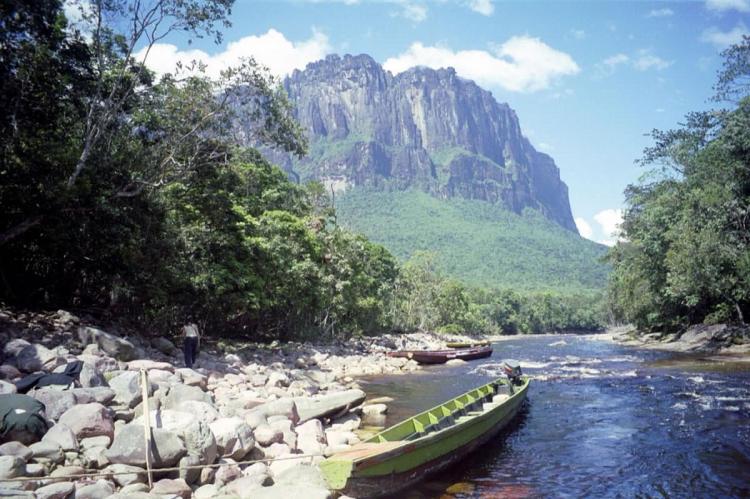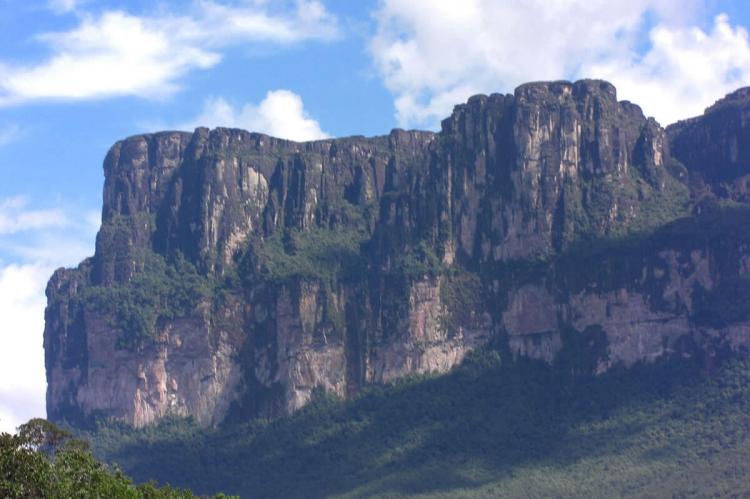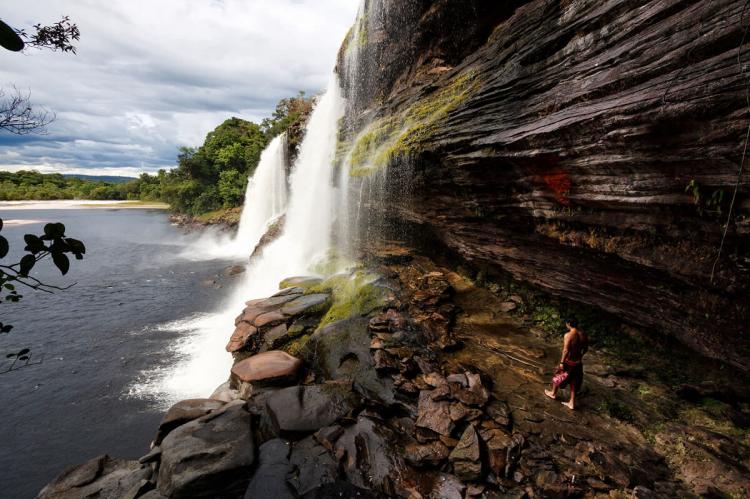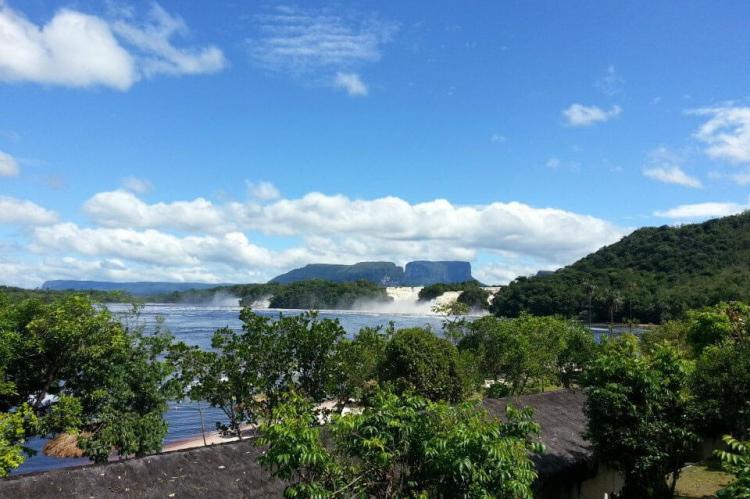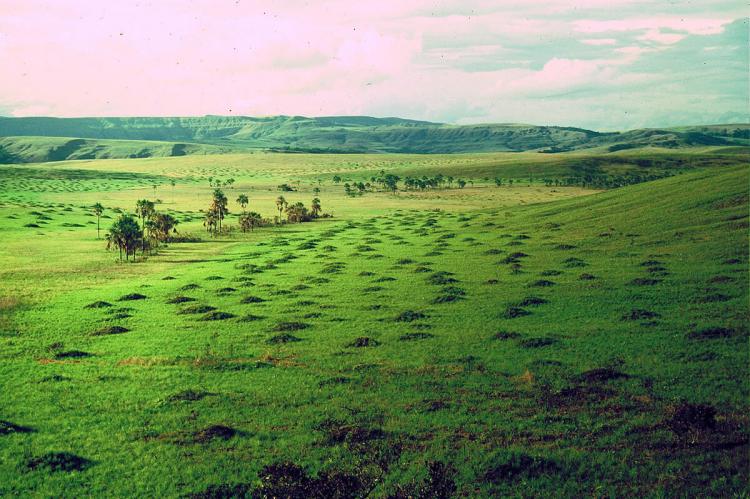Angel Falls and Canaima National Park: Venezuela’s Majestic Natural Wonders
Angel Falls is the world's tallest uninterrupted waterfall in Canaima National Park, Venezuela. It plunges from the Auyán-tepui and creates a dramatic spectacle as it spills into the deep Cañon del Diablo. This World Heritage Site showcases the beauty and ecological importance of the Guayanan Highlands.
Canaima National Park: The Home of Angel Falls and the Ancient Tepuis
Angel Falls, known as Salto Ángel, is the world's tallest uninterrupted waterfall, plunging from the towering Auyán-tepui in the Canaima National Park, Venezuela. With a drop of 979 meters (3,212 feet), the falls create a dramatic spectacle as they spill into the deep Cañon del Diablo (Devil's Canyon). This natural marvel, combined with the remarkable landscape of Canaima National Park, offers an unparalleled glimpse into Venezuela's unique geology, biodiversity, and indigenous cultures. Recognized as a UNESCO World Heritage Site, Canaima National Park covers 3 million hectares (7.4 million acres), making it one of the largest protected areas in the world. Both Angel Falls and Canaima National Park showcase the stunning natural beauty and ecological significance of the Guayanan Highlands.
Angel Falls: The World's Tallest Waterfall
Geological and Hydrological Significance
Angel Falls, with its staggering height of 979 meters (3,212 feet), ranks as the highest uninterrupted waterfall on the planet. The main plunge alone is 807 meters (2,648 feet), making it more than 15 times taller than Niagara Falls. The water cascades over the edge of the massive Auyán-tepui mountain, one of the most iconic flat-topped table mountains in the Guiana Highlands. Below the main plunge, the falls continue for an additional 400 meters (1,300 feet) through sloped cascades and rapids before a final 30-meter (98-foot) drop downstream. The cumulative descent of the falls provides an awe-inspiring view of water crashing down into the Cañon del Diablo.
The falls are fed by a fork of the Kerepacupai Meru River, which flows into the Churun River, a tributary of the larger Carrao River. Eventually, the Carrao merges with the Orinoco River, one of South America's most significant waterways. Angel Falls' geographical importance extends beyond its height; it is vital to the intricate hydrological system of Venezuela's vast river network.
Historical and Cultural Legacy
Angel Falls owes its name to an unexpected discovery by American aviator Jimmy Angel, who, in 1933, while searching for gold, stumbled upon this hidden natural wonder. His plane landed atop Auyán-tepui, solidifying his name in the history of this extraordinary waterfall. For centuries, however, the indigenous Pemon people, who inhabit the region, had revered the falls long before Jimmy Angel's fateful encounter. The Pemon referred to the falls as Kerepacupai Meru, acknowledging the natural and spiritual power of the water as it plunged from the sky.
The falls are not just a geological marvel; they are deeply ingrained in the mythological beliefs of the Indigenous Pemon people, who regard the tepuis as sacred mountains inhabited by the Marwari spirits. This blend of cultural history and natural majesty makes Angel Falls a symbol of ecological and spiritual significance.
Canaima National Park: A UNESCO World Heritage Site
Formation and Landscape
Established in 1962, Canaima National Park covers 3 million hectares (7.4 million acres) in the Gran Sabana region of southeastern Venezuela, along the borders of Guyana and Brazil. The park was designated a UNESCO World Heritage Site in 1994 due to its extraordinary geological formations, diverse ecosystems, and cultural heritage. Approximately 65% of Canaima's landscape is dominated by tepui formations and ancient sandstone table mountains that rise abruptly from the surrounding plains. These tepuis are remnants of a once-vast sandstone plateau that dates back to the Precambrian era when South America and Africa were a supercontinent.
Mount Roraima, the tallest and most accessible tepuis, holds particular geological interest, while Auyán-tepui is renowned as the site of Angel Falls. The sheer cliffs of these formations create an otherworldly landscape, and their isolated nature has allowed unique species of plants and animals to evolve, many of which are endemic to the region.
Indigenous Peoples and Cultural Heritage
Canaima National Park is home to the Pemon people, an Indigenous group belonging to the Carib linguistic family. The Pemon maintain a deep spiritual connection with the land, particularly with the towering tepuis, which they consider sacred. According to their beliefs, the Mawari spirits inhabit the mountains, and the natural elements, such as waterfalls, rivers, and forests, are imbued with spiritual significance.
The park's remoteness has preserved the traditional way of life for the Pemon. However, the arrival of tourism has led to the development of basic and luxury camps operated by local communities. These camps offer an authentic experience for visitors while providing the Pemon with a sustainable source of income.
Travel within the park is limited, with most transportation accomplished by light aircraft or by canoe on the park's numerous rivers. Initially constructed by Capuchin missionaries, the airstrips now serve as vital links to the outside world, allowing tourists and locals to access the park's remote areas.
Flora and Fauna of Canaima National Park
Biodiversity Hotspot
Canaima National Park is a biodiversity treasure trove, mainly due to the isolation of its tepuis and their surrounding forests. Approximately one-third of the plant species found in the park are endemic, existing nowhere else on Earth. These species have adapted to the harsh, rocky environment of the tepuis and the more humid lowland forests, creating a unique ecological environment of great scientific interest.
The park is home to several endangered species, including the jaguar, giant river otter, giant armadillo, giant anteater, and ocelot. These mammals represent a crucial part of the park's complex ecosystem, protected through conservation efforts. Canaima also hosts an astonishing variety of bird species, including 29 species endemic to the region. Neotropical migratory birds, such as the osprey, American swallow-tailed kite, and broad-winged hawk, rely on the park's ecosystems during migration.
The park's highland regions provide critical habitats for various specialized bird species, while the forests support a wide range of tropical flora, including bromeliads, orchids, and carnivorous plants.
Ecotourism and Conservation Efforts
Sustainable Tourism in Canaima National Park
Canaima National Park is a premier ecotourism destination, attracting visitors from around the world to experience its unique landscape, abundant wildlife, and rich cultural heritage. Ecotourism in the park emphasizes sustainability, focusing on protecting the fragile ecosystems of the tepuis and lowland forests. Guided tours are carefully managed to minimize environmental impact while providing visitors with a profound appreciation of the park's natural and cultural significance.
Visitors can reach Canaima National Park primarily by air, with flights departing from Ciudad Bolívar or Puerto Ordaz. Once within the park, transportation is typically done by boat or foot, offering an immersive experience in the rugged beauty of Venezuela's wilderness.
Conservation Challenges
While Canaima National Park is a protected area, it faces challenges related to deforestation, illegal mining, and unregulated tourism in some regions. Conservation efforts focus on strengthening the protection of endangered species and their habitats, preserving the cultural heritage of the Pemon people, and preventing further ecological degradation.
International organizations and the Venezuelan government continue to support conservation initiatives, recognizing the park's immense value as a natural and cultural resource. Increased awareness and sustainable tourism practices are vital in ensuring that Canaima remains a pristine wilderness for future generations.
Conclusion
Angel Falls and Canaima National Park are Venezuela's most iconic natural wonders, offering a breathtaking combination of dramatic landscapes, rich biodiversity, and profound cultural heritage. With its staggering height and sheer power, Angel Falls serves as a symbol of the untamed beauty of the Guayana Highlands. The vast Canaima National Park, a UNESCO World Heritage Site, protects some of the world's oldest geological formations and unique species. Together, they represent the unspoiled majesty of nature and the importance of conservation in preserving these wonders for future generations.
